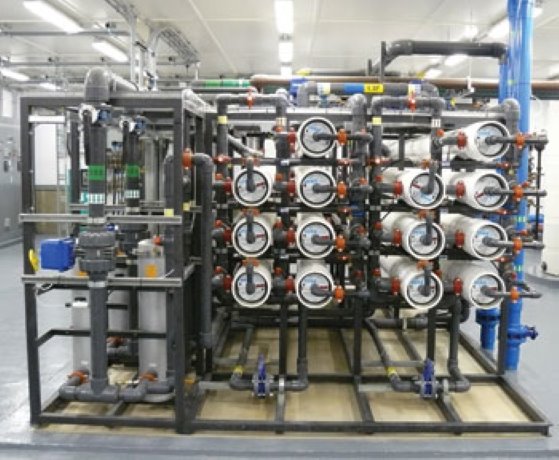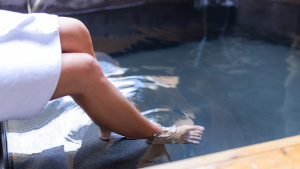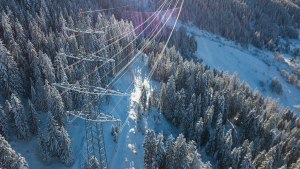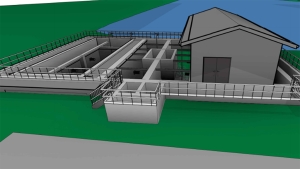When the Town of Melita, Manitoba upgraded its municipal water supply system a few years ago, the community replaced a system that had been operating since the mid 1950s.
Winnipeg
When the Town of Melita, Manitoba upgraded its municipal water supply system a few years ago, the community replaced a system that had been operating since the mid 1950s.
Bob Walker, the Mayor of Melita, said that their old well water system was getting too difficult to operate.
“It was getting harder and harder to treat and the equipment that we were operating, you couldn’t find parts for it,” he said.
“We were using way too much chemical, trying to make it drinkable.”
To solve their problem, the town built a whole new water supply system.
“We found new wells. We had to construct a pipeline that runs 22 kilometres to bring it into town, and we built a new treatment plant with a reservoir in-ground,” he said.
The reservoir has a capacity of about one million liters and the cost of the entire project approached $3.5 million.
Walker said the upgrade project was managed by the Manitoba Water Services Board, which specified the use of Reverse Osmosis (RO) filtration in the new treatment facility.
Melita’s system was designed to supply the needs of the community’s 500 residents, but he said it also has the capacity for expansion so it can become a regional water supply source for surrounding municipalities.
Already they’ve connected about 100 new residences to the system and expanded service into two smaller communities.
Murray Brothers is the vice president of Sapphire Water, a division of Calgary based Sapphire Group.
His company provided the Reverse Osmosis system used in the Melita project.
He said as water percolates through soil and in aquifers, it accumulates mineral content such as calcium, magnesium, sulphates and sodium.
This mineral content can cause aesthetic issues with the taste and odor of the water and can also cause hard water, scaling on appliances, and shortened life of boilers and water heaters.
Reverse Osmosis filtration forces water against a semi-permeable membrane, which allows the water to flow through, but rejects these accumulated minerals.
The semi-permeable membrane is made from a material called thin-film triacetate.
“It’s a type of plastic,” Brothers said.
“It almost looks like a sheet of paper but it isn’t, it’s a type of plastic.
Brothers said reverse osmosis filtration systems offer improved water quality, which municipalities can supply to existing residents and use to attract new ones.
He said RO technology isn’t new, but has only gained traction in Western Canada since the late 1990s, when federal water quality standards began to change.
Provincial standards followed suit and most existing treatment plants, he said, were becoming non-compliant under the new guidelines.
Brothers said there are no capacity limits to RO systems and no special facility requirements, so municipalities can custom design systems specific for their needs.
A town like Melita, he said, may have 150 membranes, but much larger plants can have up to several thousand.
“You can build them as big or as small as you want,” he said.
All around rural Manitoba, communities are upgrading aging water supply systems.
In almost every case, reverse osmosis filtration is emerging as the technology of choice in new water treatment facilities.
The City of Winkler placed its new water treatment facility into operation on March 4.
Winkler draws about 60 per cent of its water from a local aquifer, with the remaining 40 per cent being supplied by a regional water co-operative.
The new treatment facility features reverse osmosis filtration technology, which replaced a Lime Dosing facility.
Winkler’s director of planning and engineering, Johan Botha, said RO was selected for several reasons.
The old treatment plant was struggling with high salt content in the current water supply and they had to consider the dual-zone nature of the aquifer itself.
“The top zone is fresh water and the bottom zone is brackish water,” Botha explained. “The old plant was running off the fresh water and Manitoba conservation only wants to give us more allocation out of the brackish water.”
The new facility cost just more than $4 million dollars and took almost a year from the start of construction to commissioning and service.
Winkler’s Reverse Osmosis equipment was supplied by H20 Innovation.
As for the quality of water from their new treatment facilities, Melita’s and Winkler’s mayors agree.
They both described the quality as excellent.











Recent Comments
comments for this post are closed